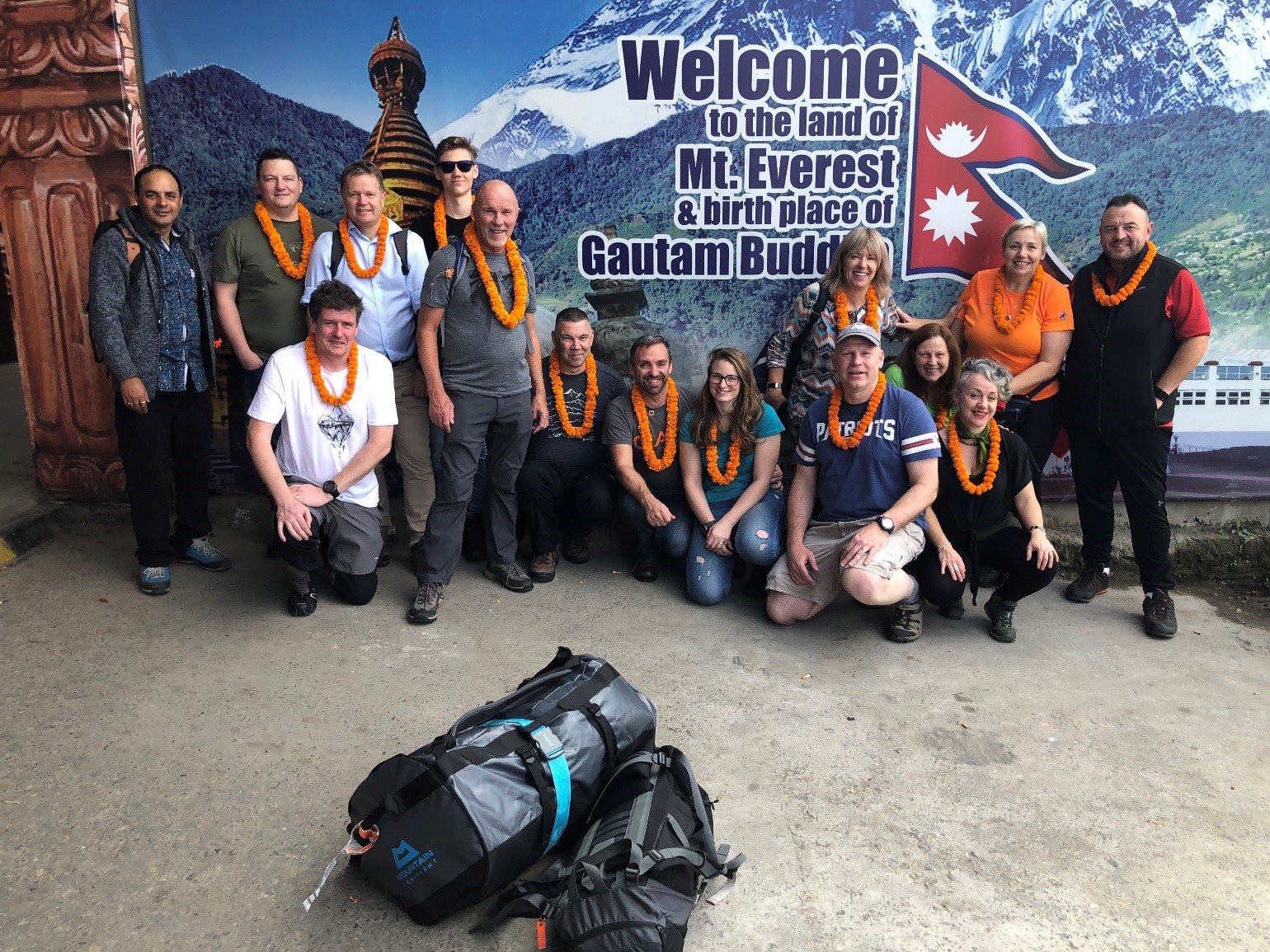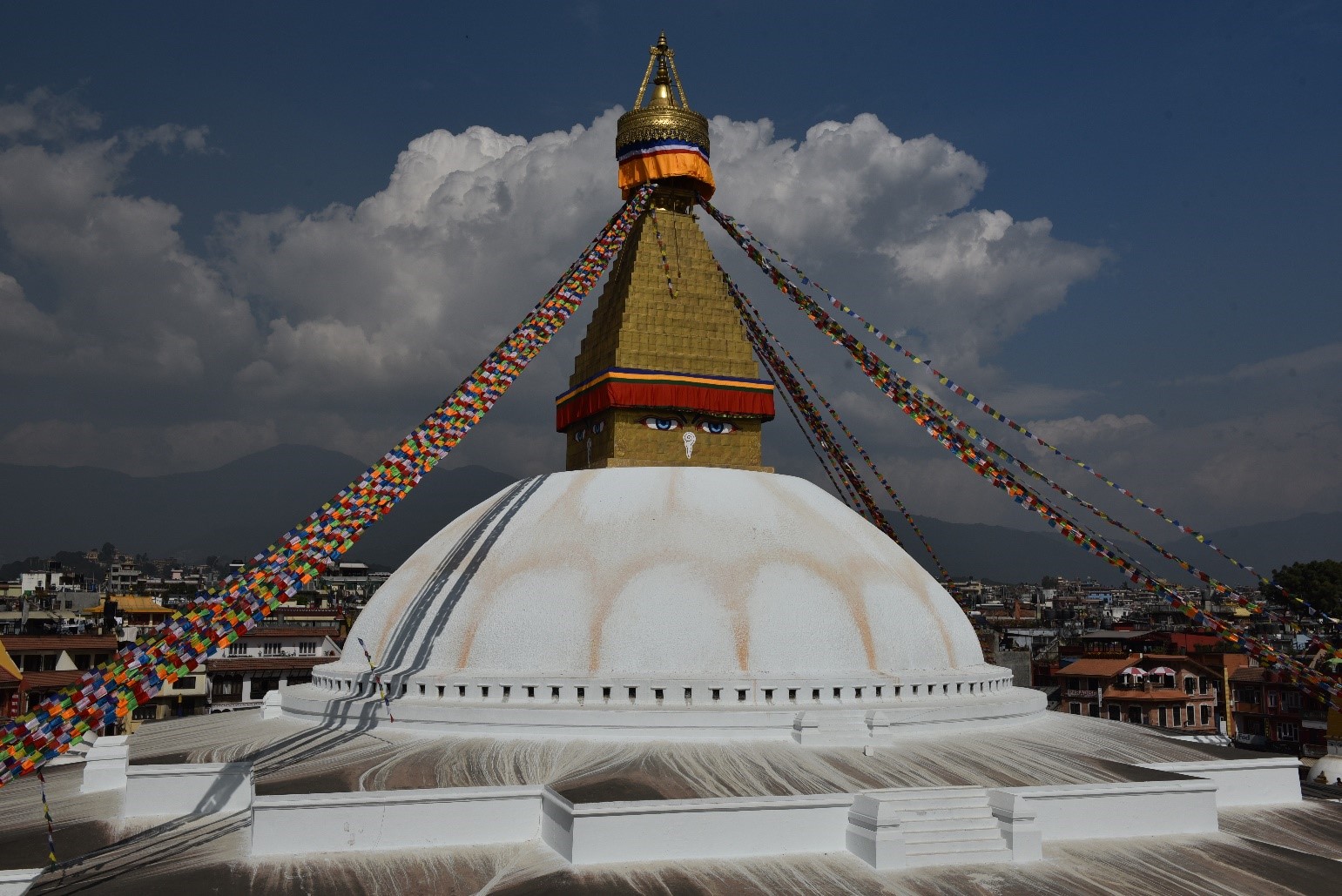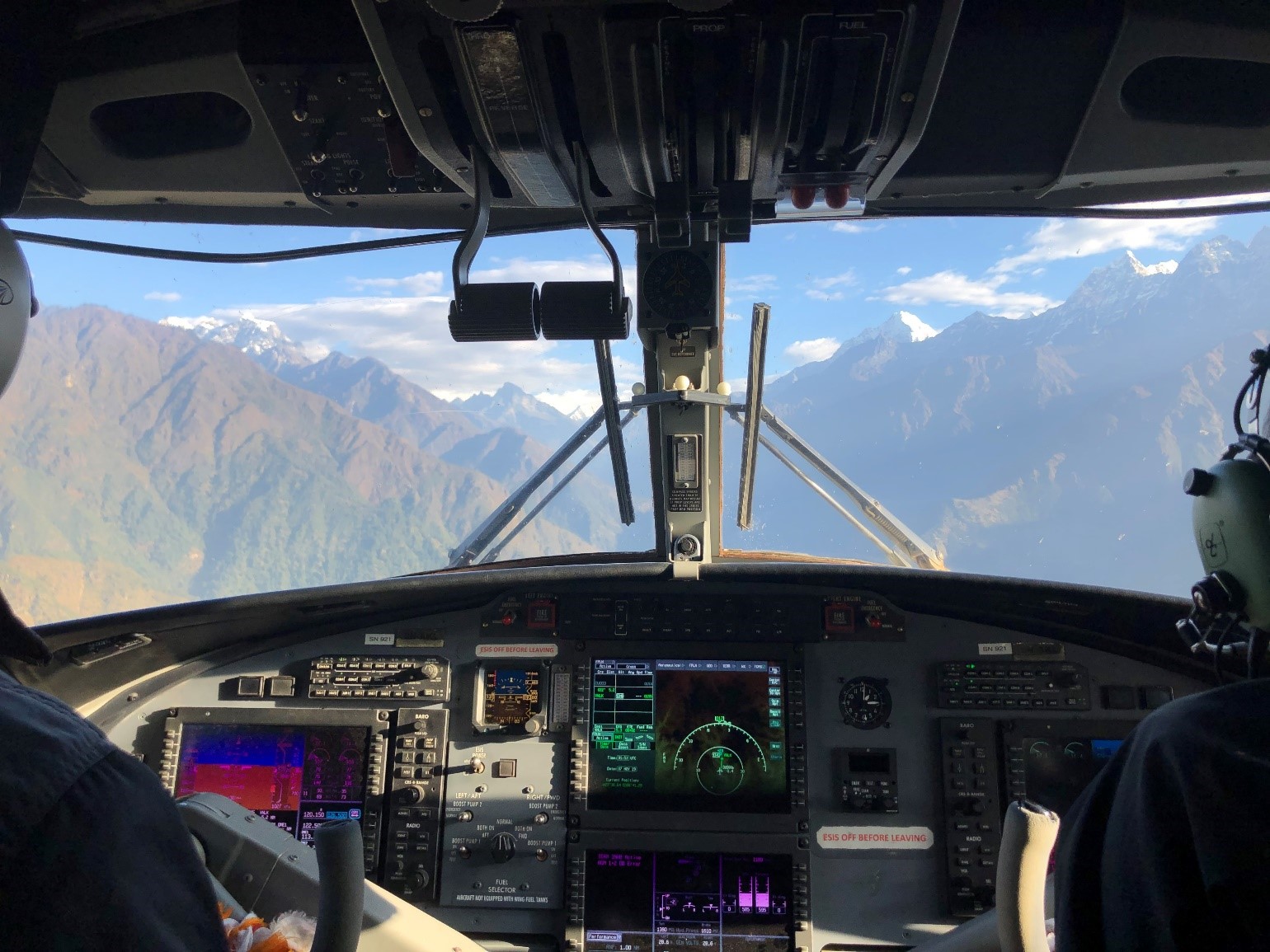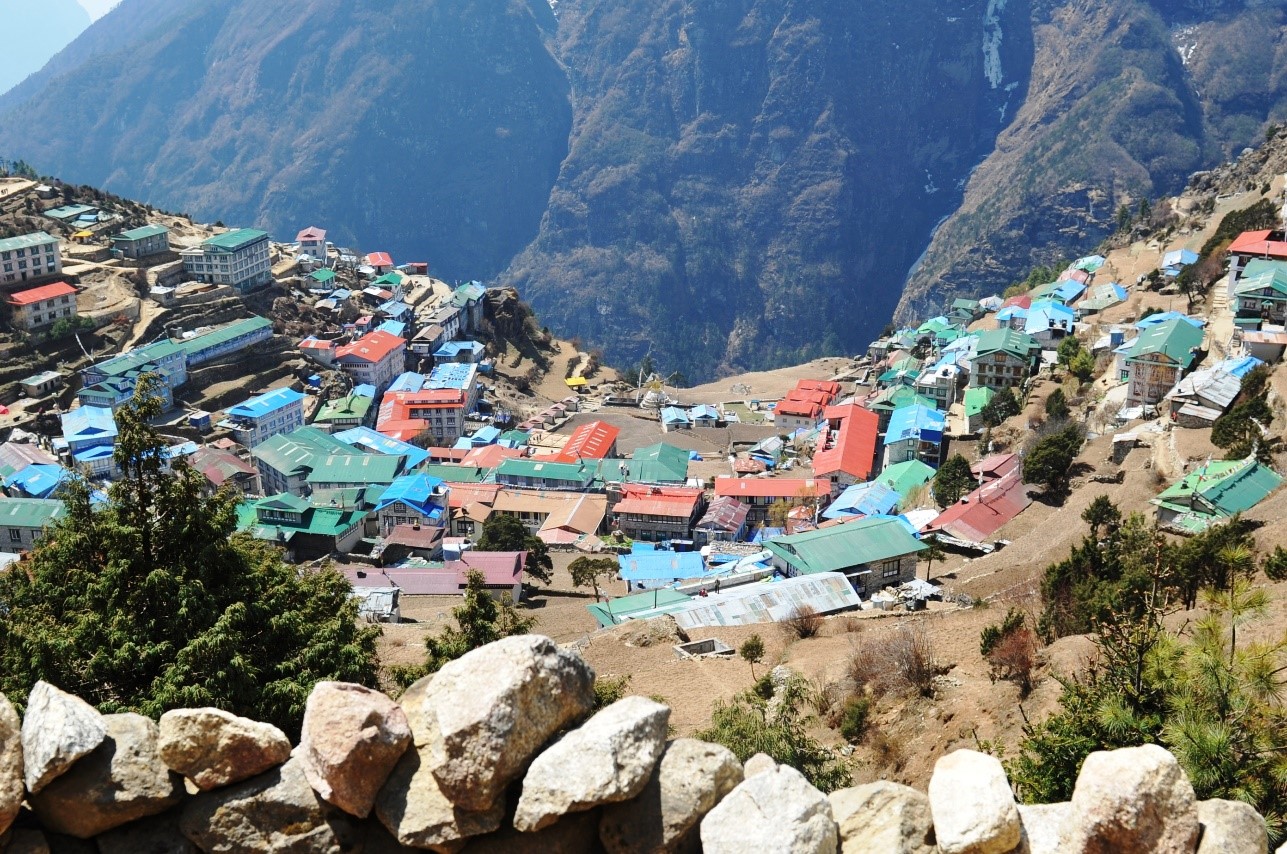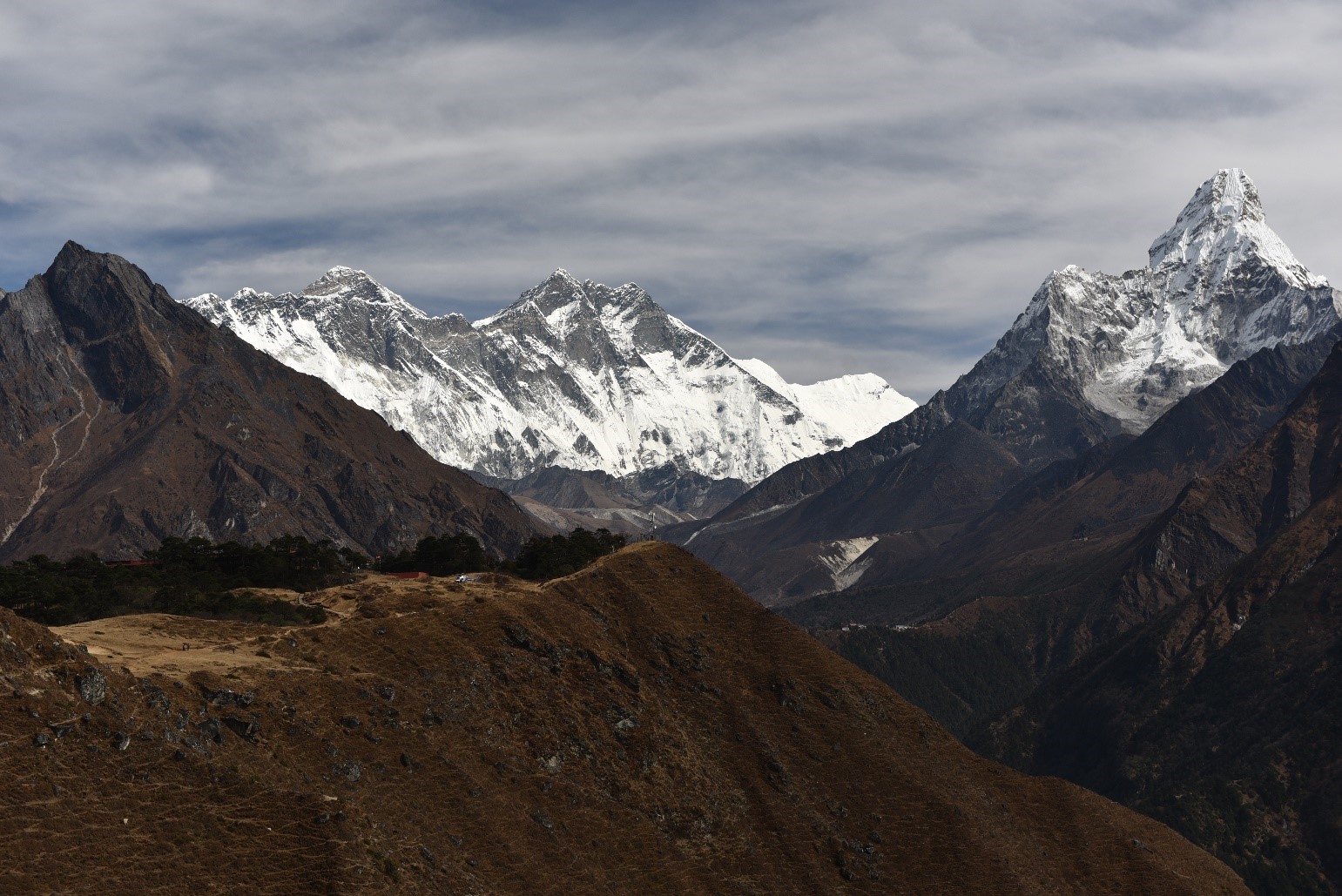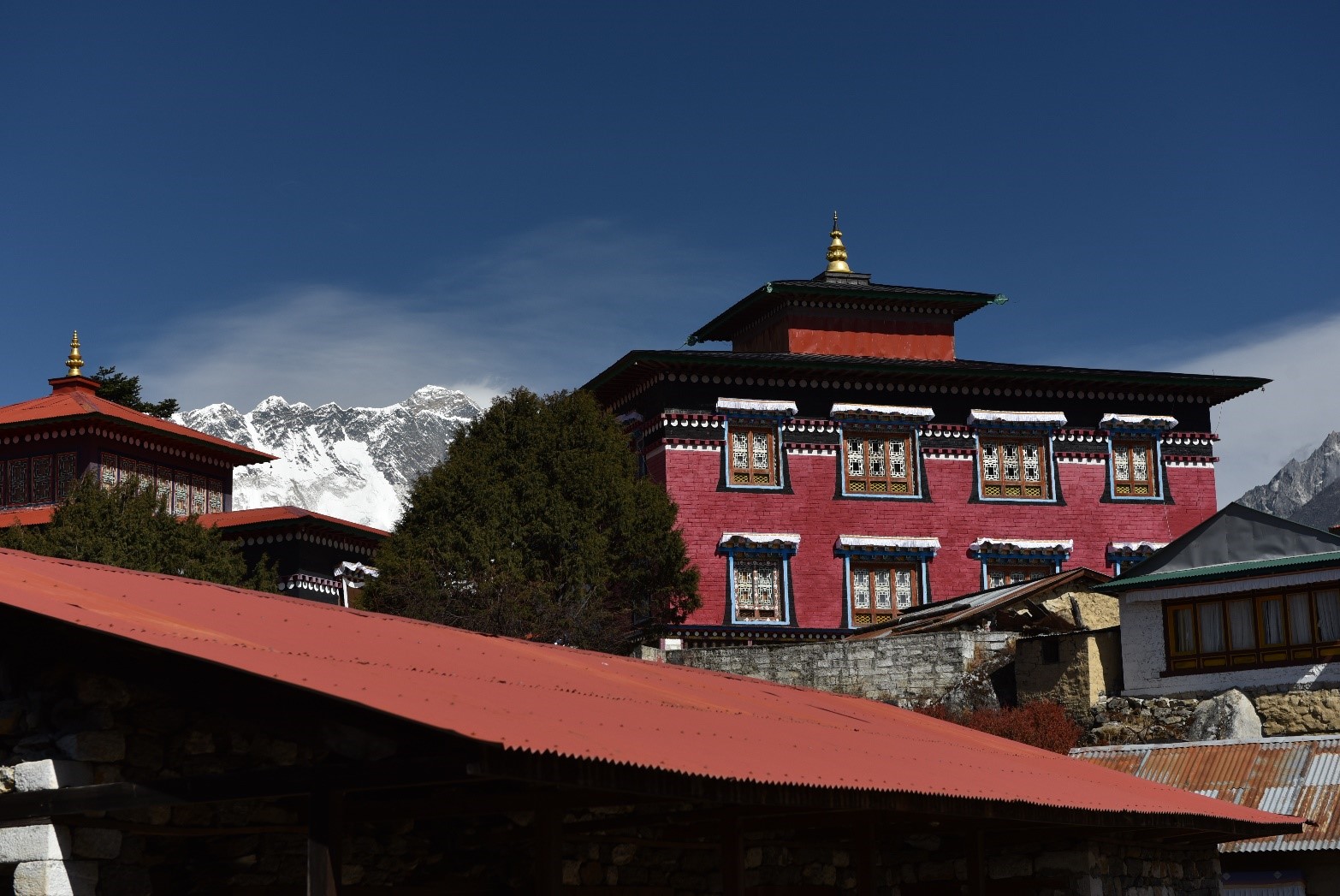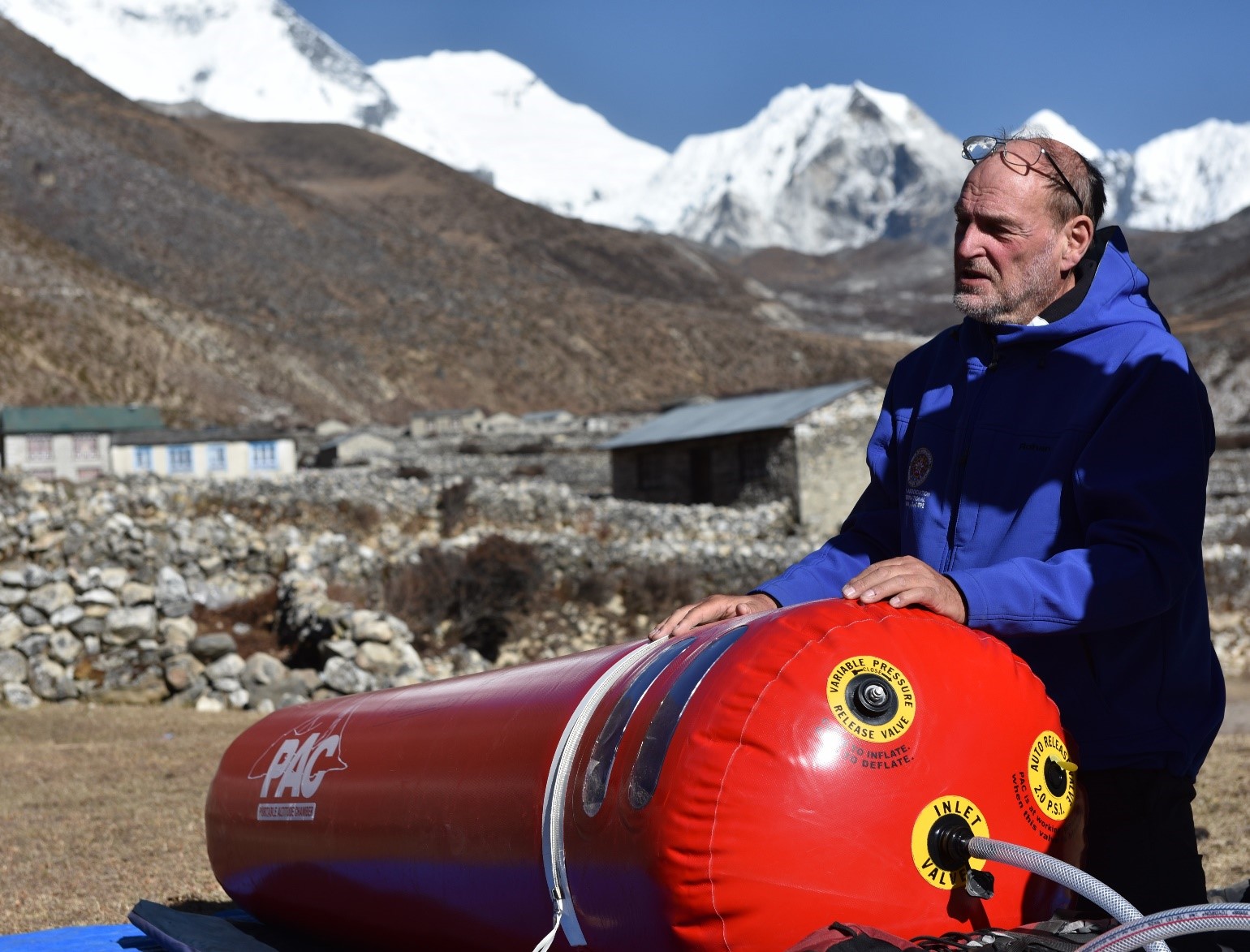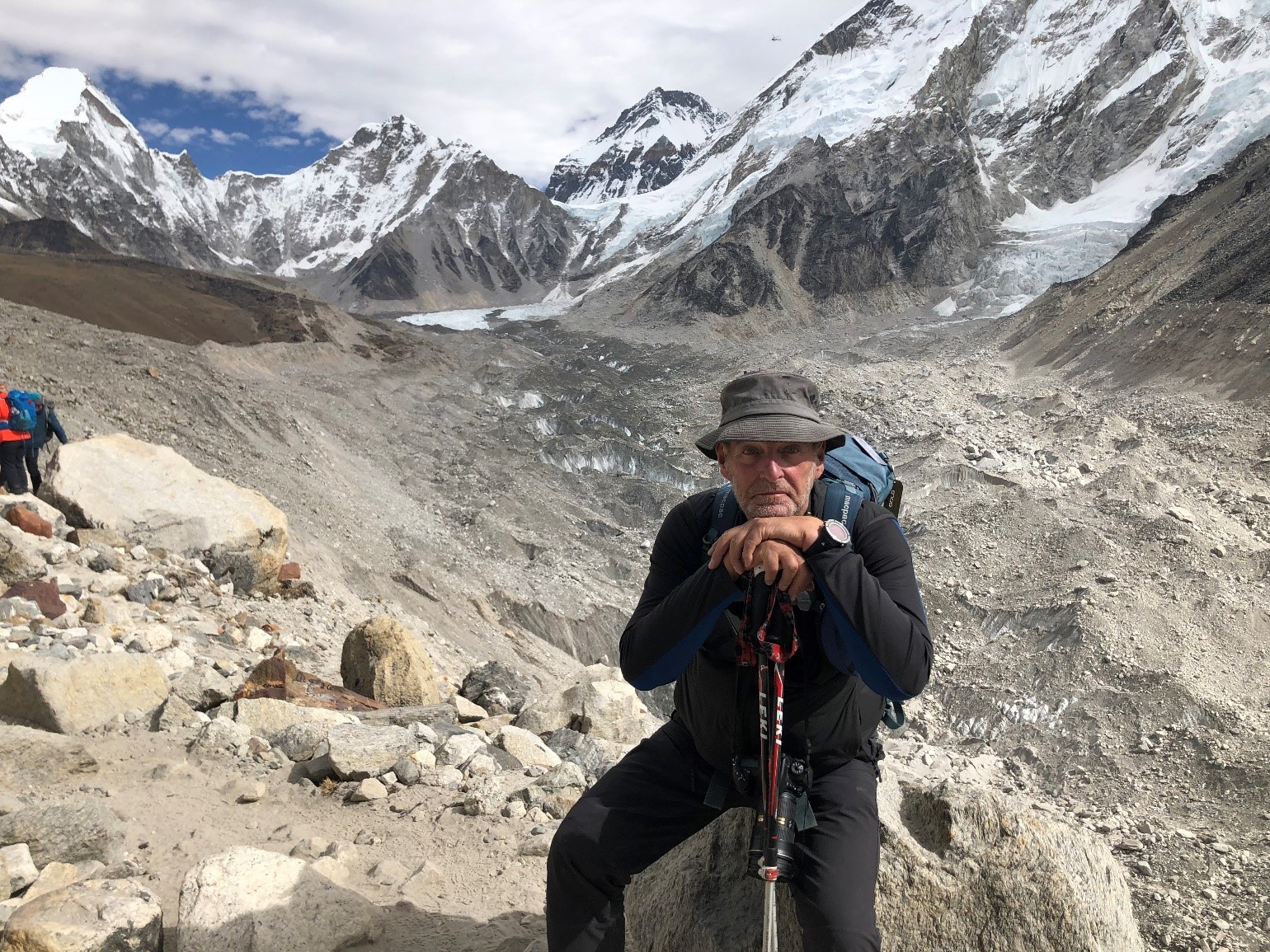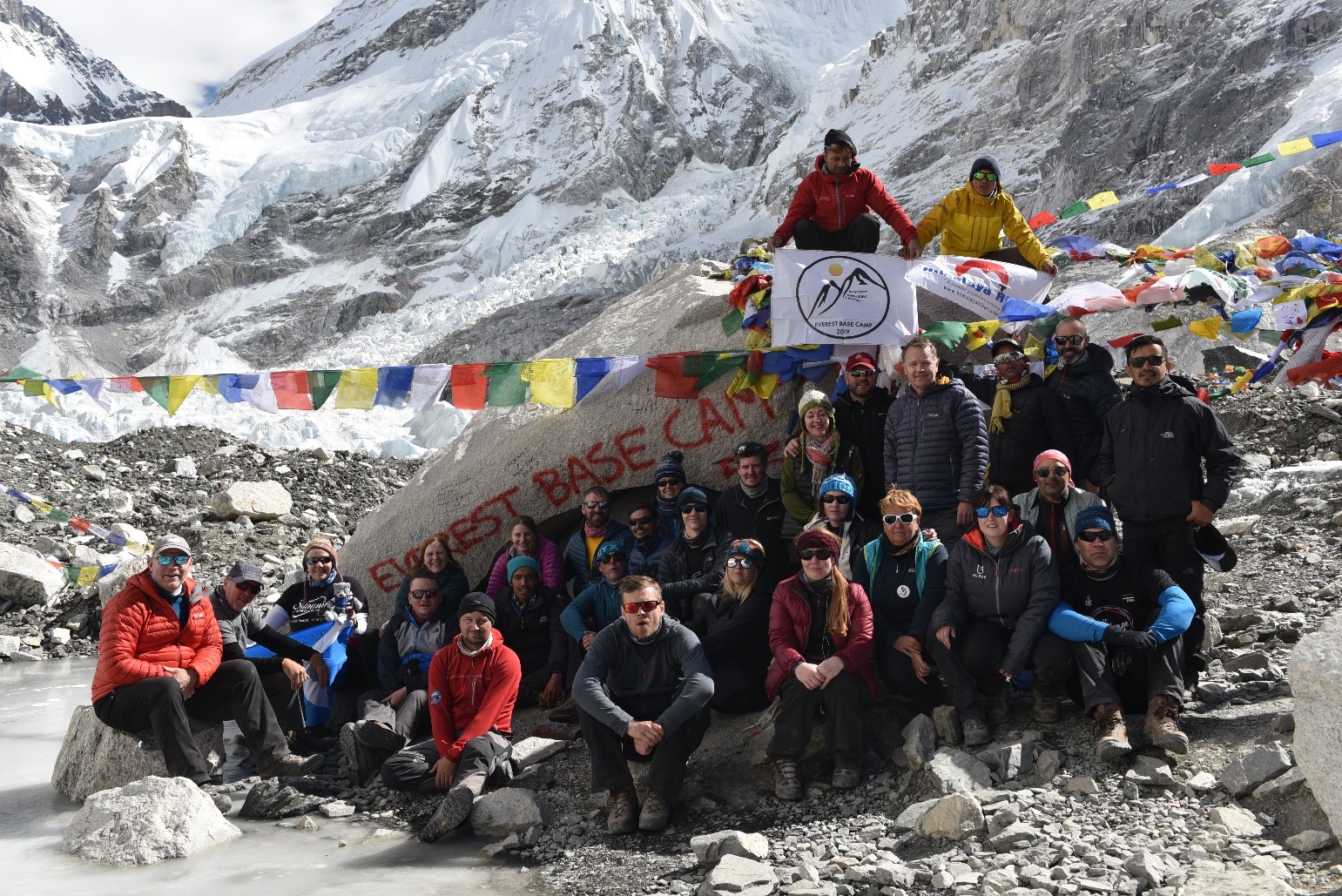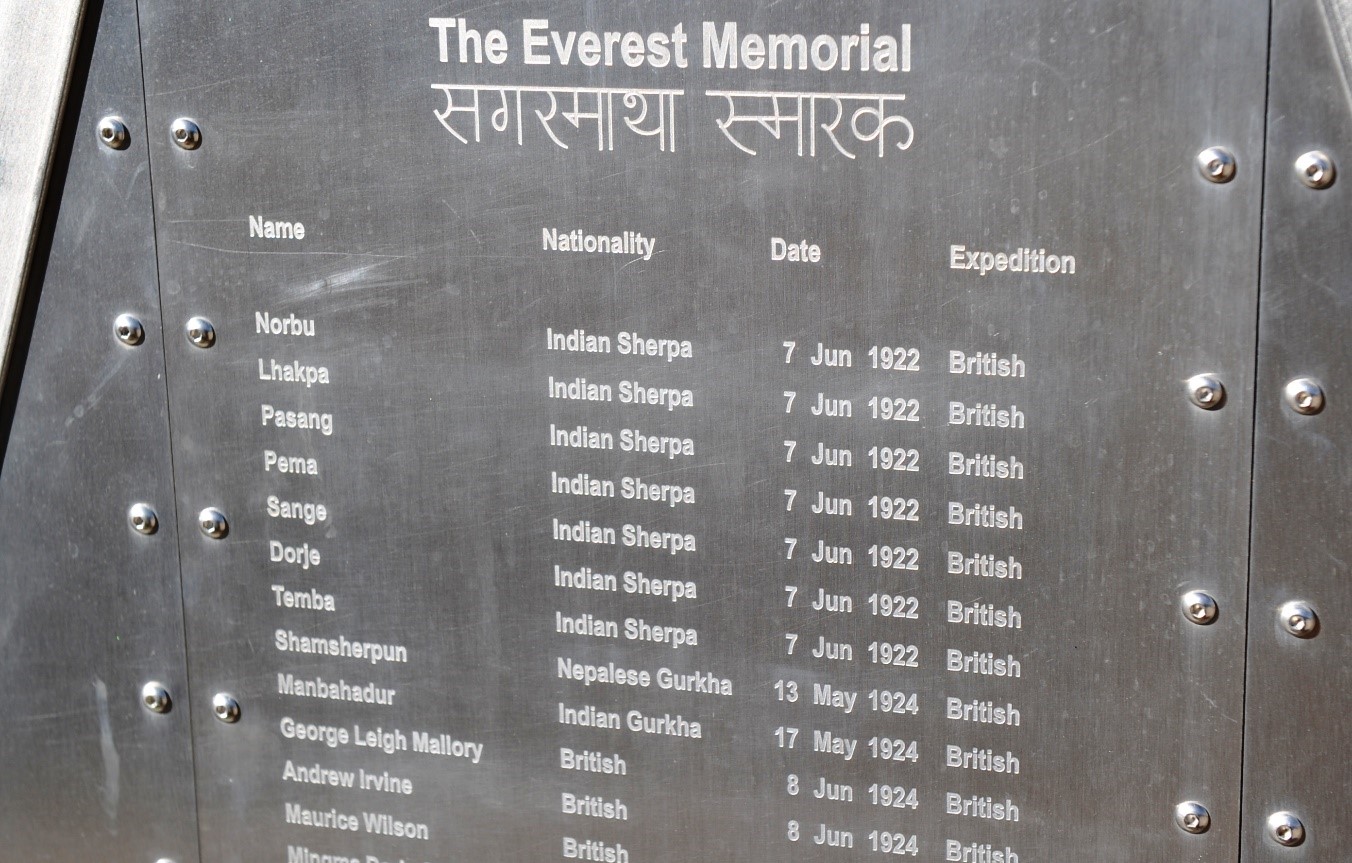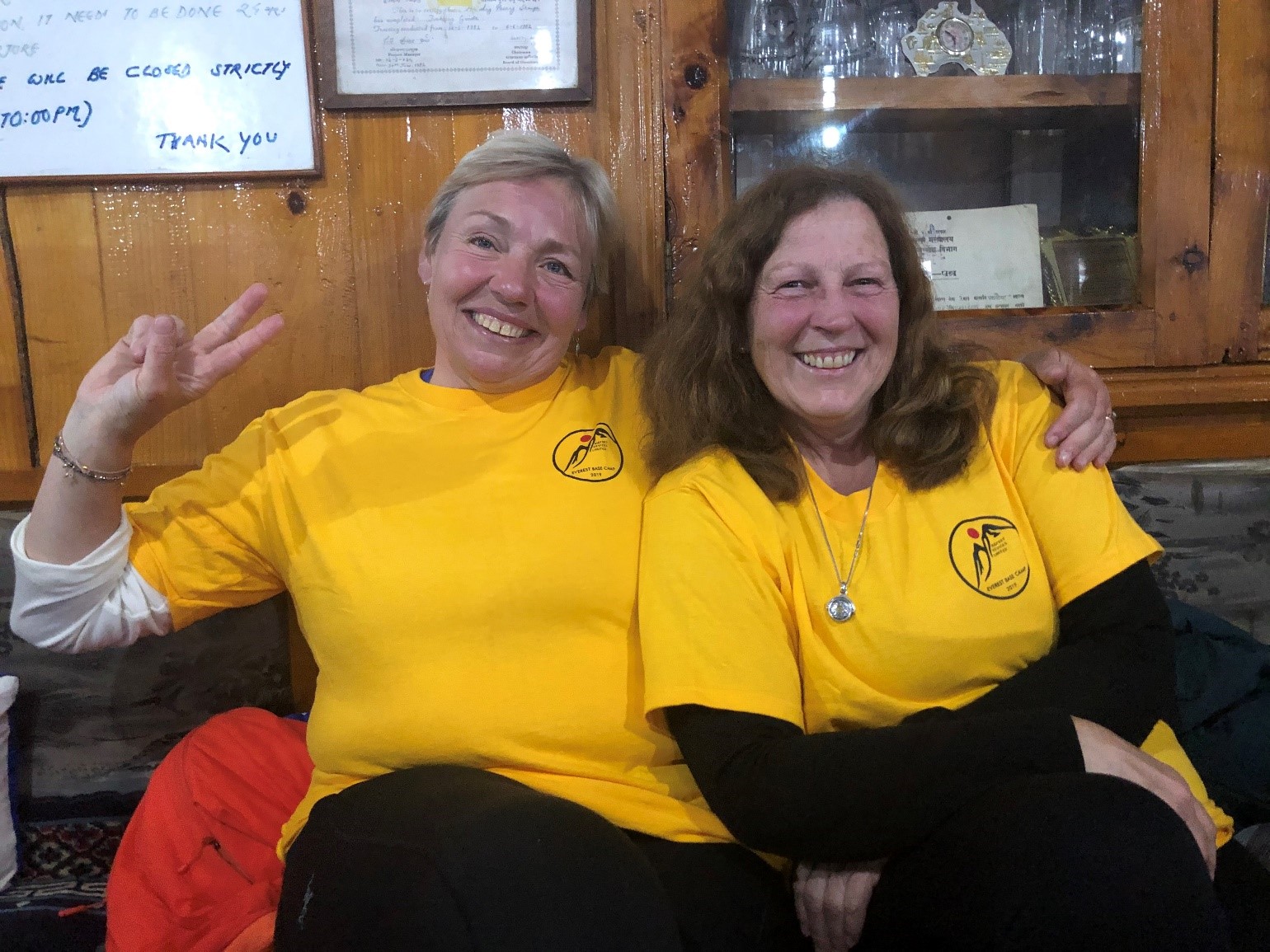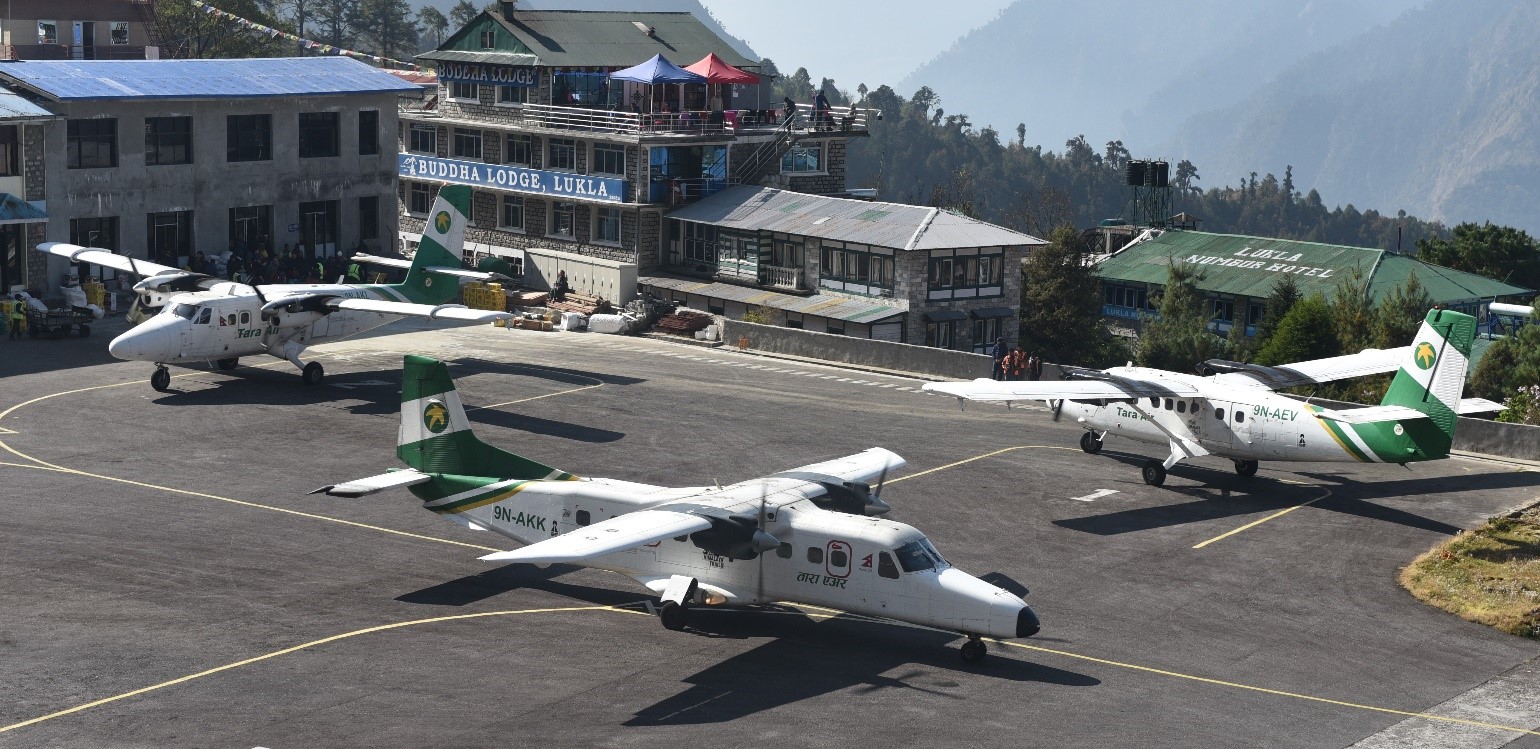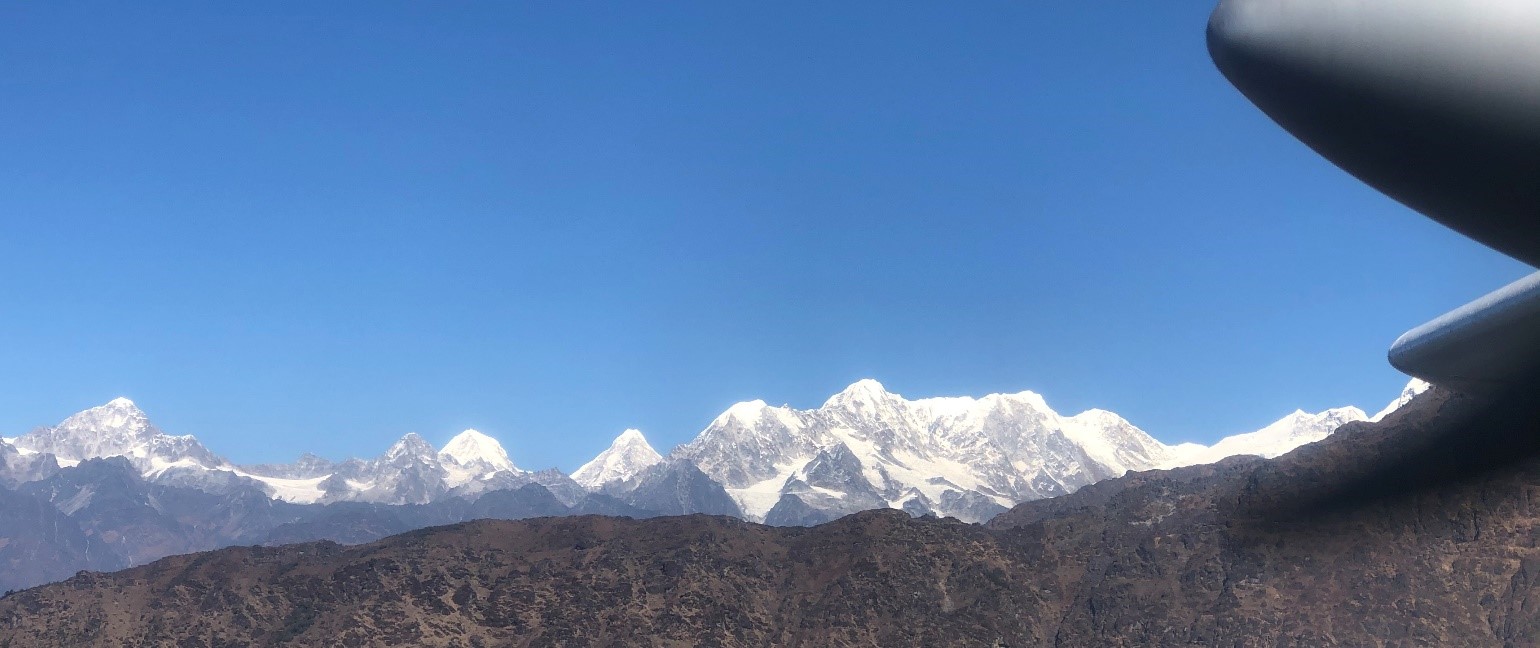Cardiff based International Mountain Leader Alan Ward was in Lockdown as many people were this year. He wrote several features for The Cardiff Times Online during this period. Having heard about his trek to Everest Base Camp last November, we asked him to recount his experiences of this trek with a group from South Wales.
Everest Base Camp, for many, is the ultimate trekking destination and I’ve led this trek several times during my many visits to Nepal. A group from South Wales reached Everest Base Camp with me in November last year and this is their story.
After the long flight from Cardiff to Kathmandu via Doha, I was at the airport to meet them and take them to the Tibet Hotel to rest for a couple of days before our onward domestic flight to Lukla. The trip was locally arranged by my friend Kamal Bhandari of Himalaya Hikes.
Kathmandu, the capital of Nepal, is a fascinating city with lots to see and the highlights include the three great temples of Boudhanath, Swayambhunath and Pashupatinath whilst the narrow streets of Thamel provide endless opportunities for shopping.
Boudhanath – one of the most sacred sites in Tibetan Buddhism outside of Tibet. Constructed in the 14th century.
During 2019, domestic flights to Lukla were from an airport to the east of Kathmandu. This inconvenience required a six-hour road journey and an overnight stay and was as a result of repairs to Kathmandu’s domestic airport terminal.
The flight to Lukla (2860m) is usually by twin engine DHC-6 Twin Otter or Dornier 228 aircraft and takes about 20 minutes
This was the largest group I’d taken to Nepal so I was assisted by two Mountain Leaders (Craig Francis and Mark Demmery) and, along with Kamal and his excellent trekking crew we were fortunate to have Dr KC Sudip with us. I’ve worked with expedition doctors in the past but KC Sudip was by far the most professional of these and a real pleasure to work with.
On arrival into Lukla, from several aircraft, we all met at the Paradise lodge & Restaurant for breakfast and for final trekking preparations to be completed.
Our itinerary to Everest Base Camp was 19 days in total and our accommodation was in good quality lodges, a far cry from my first visits to Nepal when trek accommodation was in tents with very basic facilities. Kamal had arranged good lodges throughout our trek with an equally high standard of catering. At higher altitudes, as we neared Gorak Shep, the highest settlement in the Khumbu, the standard of lodge bedrooms was slightly less.
Most of the group already knew each other as I’d arranged pre-trek training events in the Brecon Beacons National Park. This is always worth doing as it meant a more bonded group right from the start. Safety and welfare is an important part of group management, particularly at higher altitudes. Every morning and evening, monitoring of oxygen intake and pulse was recorded so that Dr KC Sudip and I could ensure everyone was acclimatizing to the higher altitudes.
- Days 4 + 5: The trek followed the Dudh Kosi river valley route with an ascent up to the Sherpa capital of Namche Bazaar (3446m).
Namche Bazaar – capital of the Khumbu region
Day 6: From Namche Bazaar (3446m), we traversed along a high path from where we had our first good view of Everest.
The first good view of Everest with Ama Dablam to the right of the picture
- Day 7: We then headed towards Thyangboche Monastery (3867m) located on top of a mountain ridge.
Thyangboche Monastery (3867m) with Everest just visible to the left. The monastery was destroyed by earthquake in 1934 and again by fire in 1989 after an electrical short circuit.
- Day 9: We descended to the Imja Khola river and continued to the villages of Pangboche (4000m) and Dingboche (4350m). At Dingboche I demonstrated how the Portable Altitude Chamber should be used.
The Portable Altitude Chamber is an important piece of equipment on high altitude treks and expeditions – oxygen was also carried
- Days 10 + 11: Beyond Dingboche (4350m), the trek continued to Lobuche (4930m) and on to Gorak Shep (5160m), our highest overnight accommodation. From Gorak Shep some of the group climbed Kala Pattar (5623m) for even more spectacular views of the surrounding mountains, including Everest’s south west face.
Time for a breather – even leaders need a rest!
- Day 12: Today we reached Everest Base Camp (5300m) at the foot of the Khumbu ice fall and I was pleased that everyone reached here as often, not everyone reaches here. This was a terrific achievement by everyone with special thanks to Dr KC Sudip for providing medical support when it was required.
At Everest Base Camp (5300m)
- Day 13: Reaching Pheriche (4240m), we visited the Everest Memorial and enjoyed an excellent overnight stay at the Himalayan Hotel. It was our last night with four of the group who would leave us the next morning for Island Peak (6189m).
Pheriche – the Everest Memorial
- Days 14 – 16: The return trek to Lukla was on the same trails we’d used to get to Gorak Shep and, in theory, were downhill. However, there are always uphill sections round every corner and this is known as “Nepali Flat”.
Highlights of these days were Yak Steak and Chips in our lodge at Kyangjuma, Coffee and Cake at the Danish Bakery in Namche Bazaar and the general satisfaction that we were almost at the end of such a memorable trek.
Back in Lukla there was a farewell dinner party and I organised a raffle of clothing and equipment for our trekking crew. After dinner, tips were given to the trekking crew as a financial reward for taking such good care of us.
Happy trekkers Jane Wood and Mags Davies at the farewell party in Lukla
- Day 17: Flights to Raamachap were followed by the 6 hour drive back to the Tibet Hotel in Kathmandu for two nights before the onward international flights home.
Lukla Airport
Flight to Kathmandu
Questions can be sent to Alan at [email protected] who can arrange this trip, or similar for those wishing to trek in this area.
September sees a resumption in my work as a Mountain Training Provider and I’ll be running the popular Mountain Skills course which is an ideal choice for people interested in exploring mountainous terrain and want to develop their confidence in the mountains. This course provides the training required for those enjoying the outdoor environment but who might be lacking in skills and confidence to enjoy the outdoors more confidently. The course content is:
Planning – how to successfully plan a walk in the mountains in the UK or Ireland.
Walking skills – what things should you consider while out walking and what can make life easier (pace, nutrition, movement skills, steep ground etc.).
Clothing and equipment – being suitably dressed and equipped can make the difference between a great day out and a complete disaster.
Weather – how it affects the mountains and your day out.
Navigation in the mountains – everything from selecting a compass and using a map to navigation in poor visibility and an intro to GPS.
Environmental knowledge – how to minimise your impact on the hill, information on good practice and useful organisations.
Hazards and emergency procedures in the mountains – how to respond to any hazards you encounter and what to do in an emergency.
Visit the Bigfoot Services Limited website (www.bigfootservices.co.uk) to view the range of Alan’s activities, future events, galleries, testimonials and how his Corporate Social Responsibility Policy helps to train mountain guides in the developing world where he donates his time free of charge to provide mountain training to those who have no access to this.


